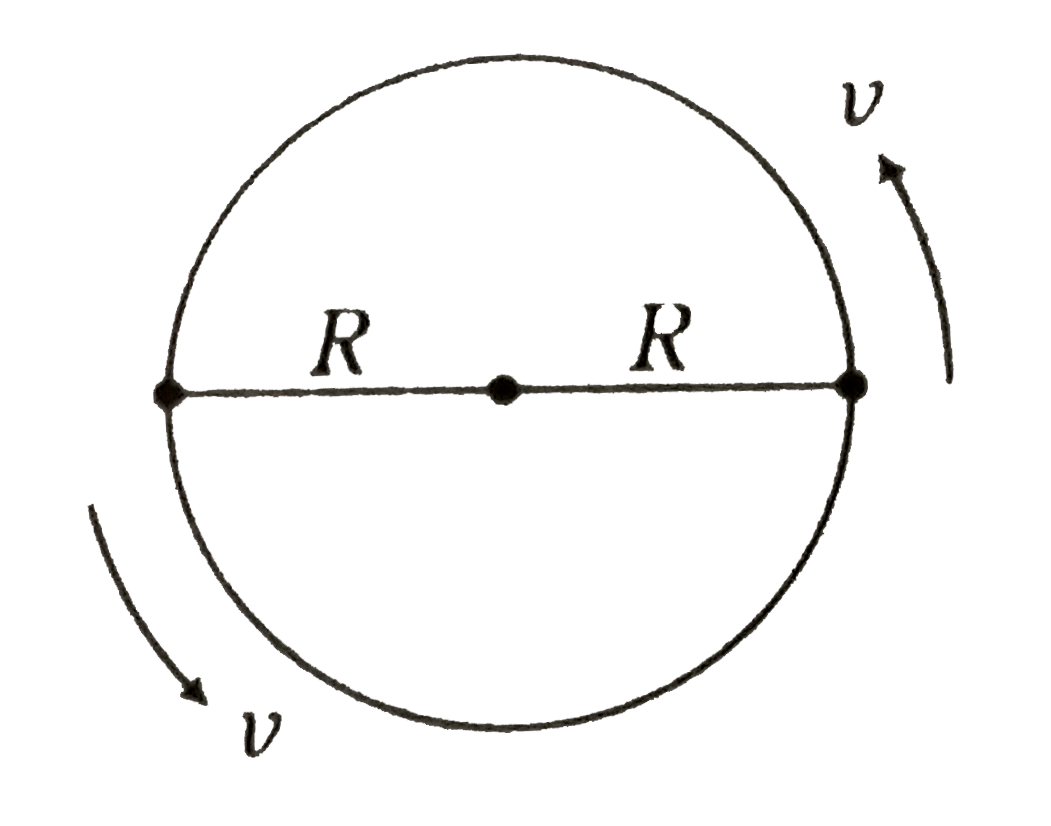Two particles of equal mass go around a circle of radius R under the action of their mutual gravitational attraction. Find the speed of each particle.
v=√GmR
v=√Gm2R
v=12√GmR
v=√4GmR
The correct Answer is:C
As gravitational force provides the centripetal force to the satellite to revolve around the earth

G.m.m4R2=mv2(R)⇒v=12√GmR
Topper's Solved these Questions
- GRAVITATIONBOOK - DC PANDEY ENGLISHCHAPTER - GRAVITATIONEXERCISE - (B) Chapter Exercises
31 Videos
- GRAVITATIONBOOK - DC PANDEY ENGLISHCHAPTER - GRAVITATIONEXERCISE - (C) Chapter Exercises
45 Videos
- GRAVITATIONBOOK - DC PANDEY ENGLISHCHAPTER - GRAVITATIONEXERCISE - Check Point 10.6
20 Videos
- GENERAL PHYSICSBOOK - DC PANDEY ENGLISHCHAPTER - GENERAL PHYSICSEXERCISE - INTEGER_TYPE
2 Videos
- KINEMATICSBOOK - DC PANDEY ENGLISHCHAPTER - KINEMATICSEXERCISE - INTEGER_TYPE
10 Videos
Similar Questions
Assertion : The force between two finite rigid bodies is not necessarily along the line joining their centre of mass .
Reason : Gravitational force between two particles is central .
View SolutionStarting from the centre of the earth having radius R, the variation of g (acceleration due to gravity) is shown by
View SolutionThe centripetal force on a satellite orbiting round the earth and the gravitational force of earth acting on the satellite both equal F. The net force on the satellite is
View SolutionIf the dimensions of B2l2C are [MaLbTc], then the value of a+b+c is
[Here B,l and C represent the magnitude of magnetic field, length and capacitance respectively]
View SolutionA particle is projected with velocity 2(√gh), so that it just clears two walls of equal height h which are at a distance of 2h form each other. Show that the time of passing between the walls is 2(√hg). [Hint : First find velocity at height h. Treat it as initial velocity and 2h as the range. ]
View SolutionTwo particles of equal mass go round a circle of radius R under the action of their mutual gravitational attraction. Find the speed of each particle.
View SolutionTwo particles of equal mass m go round a circle of radius R under the action of their mutual gravitational attraction. The speed of each particle is
View SolutionTwo particles of same mass m go around a circle of radius R under the action of their mutual gravitational attraction. The speed of each particle is ,
View SolutionTwo particles of equal mass m go around a circle of radius R under the action the of their mutual gravitational attraction . The speed v of each particle is
View SolutionTwo particles of equal mass m go round a circle of radius R under the action of their mutual gravitational attraction. The speed of each particle is
View SolutionTwo particles of equal mass m go round a circle of radius R under the action of their mutual gravitational attraction. The speed of each particle is
View SolutionTwo particles of equal mass go round a circle of radius R under the action of their mutual gravitational attraction. Find the speed of each particle.
View SolutionTwo particles of equal mass move in a circle of radius r under the action of their mutual gravitational attraction. Find the speed of each particle if its mass is m.
View SolutionTwo particles of equal mass move in a circle of radius r under the action of their mutual gravitational attraction. Find the speed of each particle if its mass is m.
View SolutionTwo particles of equal mass move in a circle of radius r under the action of their mutual gravitational attraction. Find the speed of each particle it its mass is m.
View SolutionTwo particles of equal mass move in a circle of radius r under the action of their mutual gravitational attraction. Find the speed of each particle it its mass is m.
View Solution

